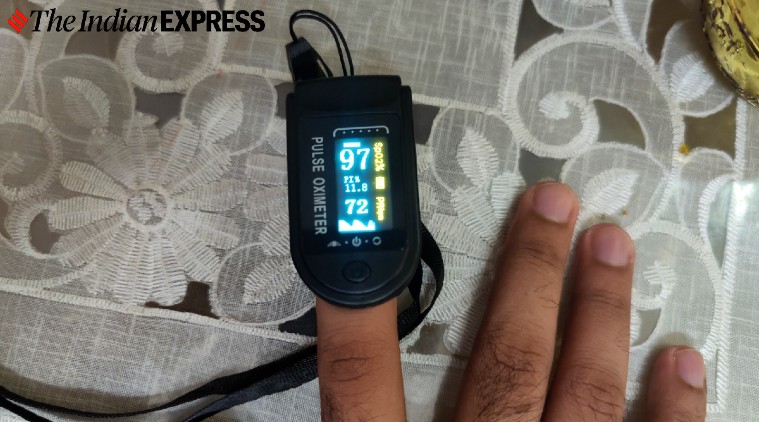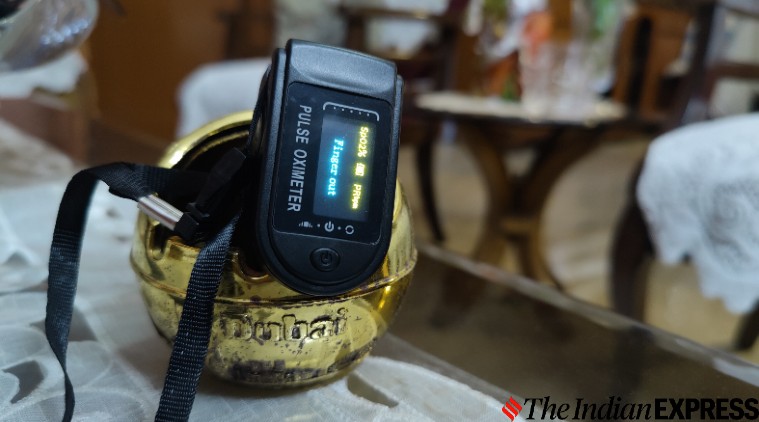 Apart from monitoring for a COVID-19 symptom, a pulse oximeter can come in very handy, as it can detect other health issues that are related to blood oxygen levels. (Express Photo: Karanveer Singh Arora)
Apart from monitoring for a COVID-19 symptom, a pulse oximeter can come in very handy, as it can detect other health issues that are related to blood oxygen levels. (Express Photo: Karanveer Singh Arora)
With the COVID-19 pandemic in full swing, it is a good idea for everyone to keep a check on their blood oxygen levels. If they notice a drop, it would be a needed to go in for tests as low oxygen levels are one of the indicators of COVID-19.
Using a pulse oximeter is non-invasive and painless. It calculates the amount of oxygen in the blood in places farthest from the heart. A pulse oximeter is a small clip-like device that attaches to a body part like a finger, earlobe or toes. You can currently get a good oximeter between Rs 1,000 and Rs 2,000. During a sale like the upcoming Amazon Prime Days sale, you might be able to purchase it at a much lower price point.
Apart from monitoring for a COVID-19 symptom, a pulse oximeter can come in very handy, as it can detect other health issues that are related to blood oxygen levels. These conditions include Asthma, Lung Cancer, Pneumonia, chronic obstructive pulmonary disease and more.
How does a pulse oximeter work?
The pulse oximeter when attached to your finger, earlobe or toe beams multiple small lights that pass through the blog in your body part the oximeter is attached too, thus measuring the amount of oxygen in your blood. The device is able to do this by measuring the light absorption patterns in oxygenated or deoxygenated blood.
Within seconds of being turned on, the pulse oximeter will tell you your oxygen saturation levels along with your heart rate and PI%. PI is an indicator of the relative strength of the pulsatile signal from a pulse oximeter.
How to use a pulse oximeter
* The clip style pulse oximeter needs to be placed on your finger, earlobe, or toe. The machine will not prick you, it will just make you feel a small amount of pressure.
* The finger or the body part should be placed directly under the light.
 Within seconds of being turned on, the pulse oximeter will tell you your oxygen saturation levels along with your heart rate and PI%. (Express Photo: Karanveer Singh Arora)
Within seconds of being turned on, the pulse oximeter will tell you your oxygen saturation levels along with your heart rate and PI%. (Express Photo: Karanveer Singh Arora)
* You may have to remove any fingernail polish, depending on what kind of a pulse oximeter you purchase.
* Turn on the probe.
* Within seconds the probe will start relaying accurate information about your blood oxygen saturation levels.
* After the test is over and you have your results, simply take off the probe and it will shut down automatically.
Any count under 95 shows a problem and that is when you have to consult a medical practitioner.
Pulse oximeters also show pulse rate and visualises the same realtime and over a five-second period. The one button on the device can be used to charge orientation of the display is most of the units.